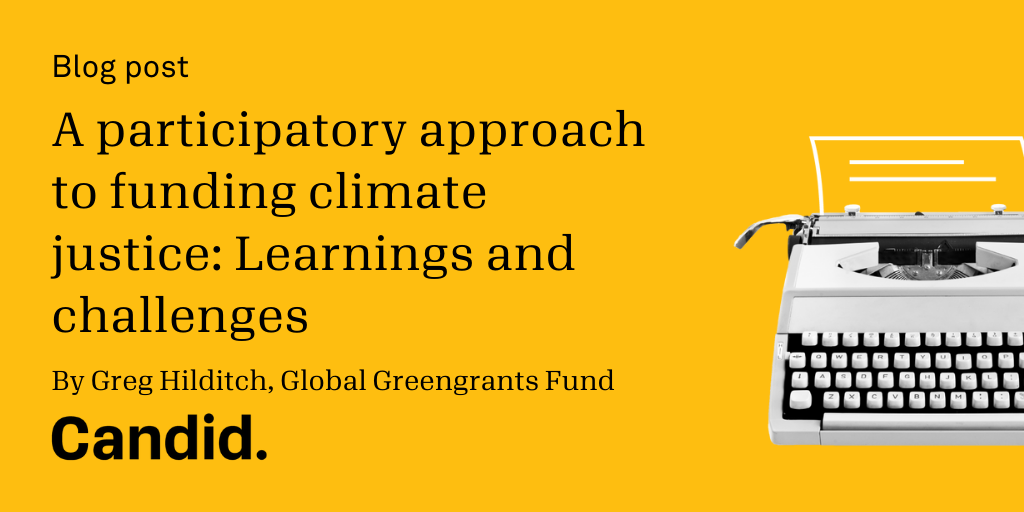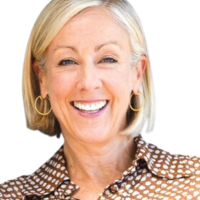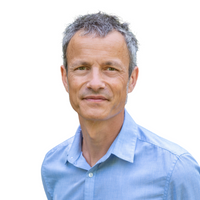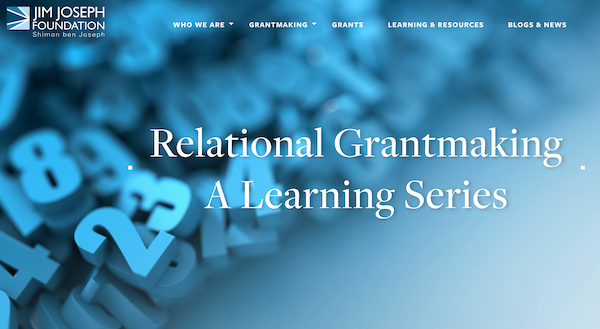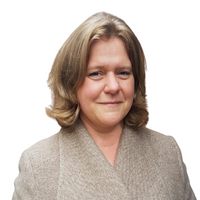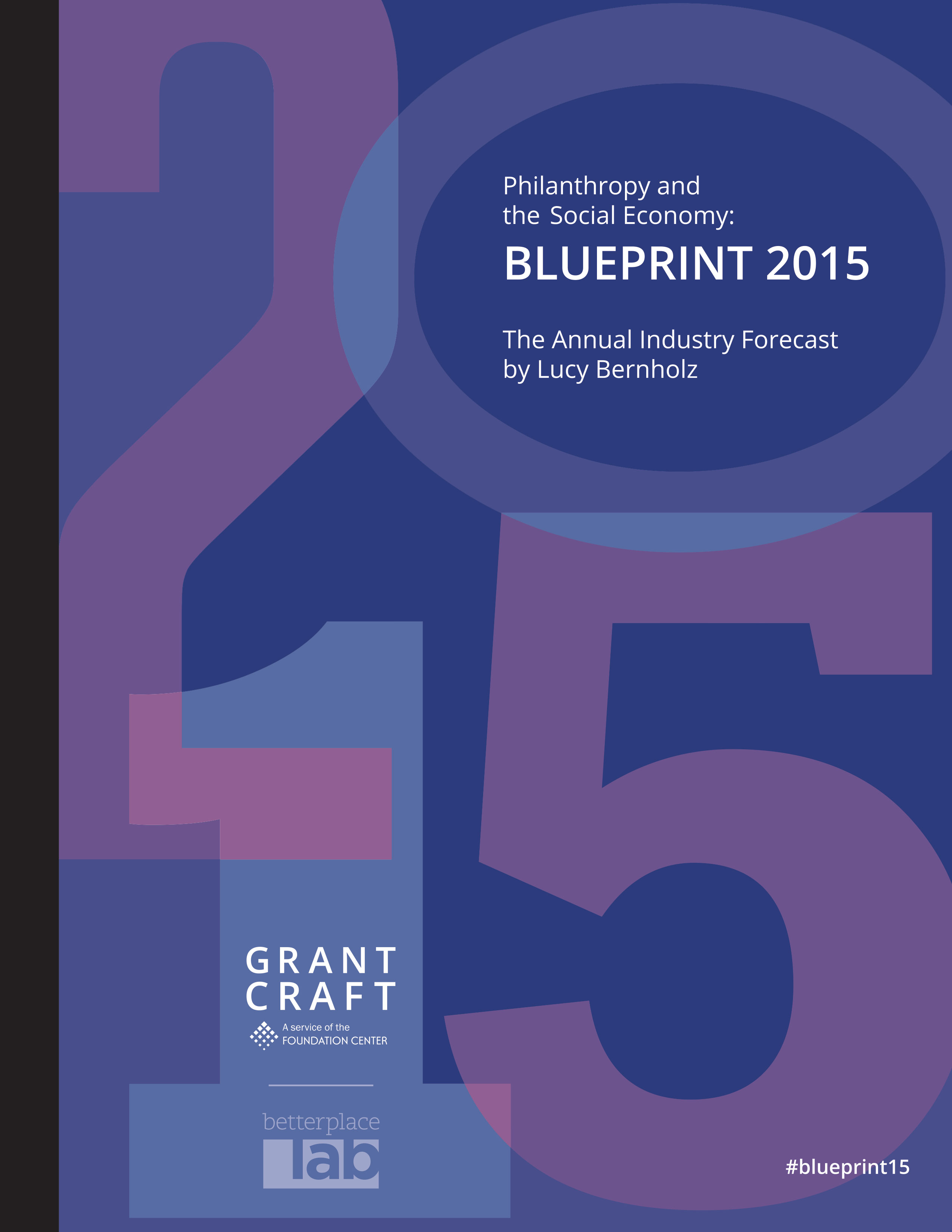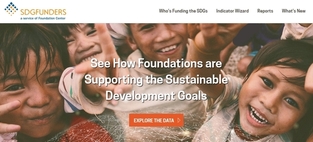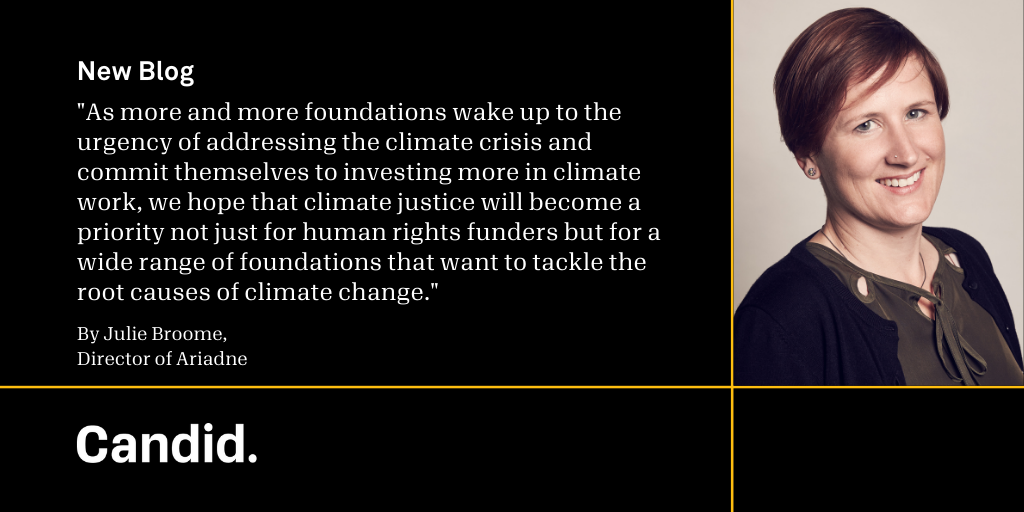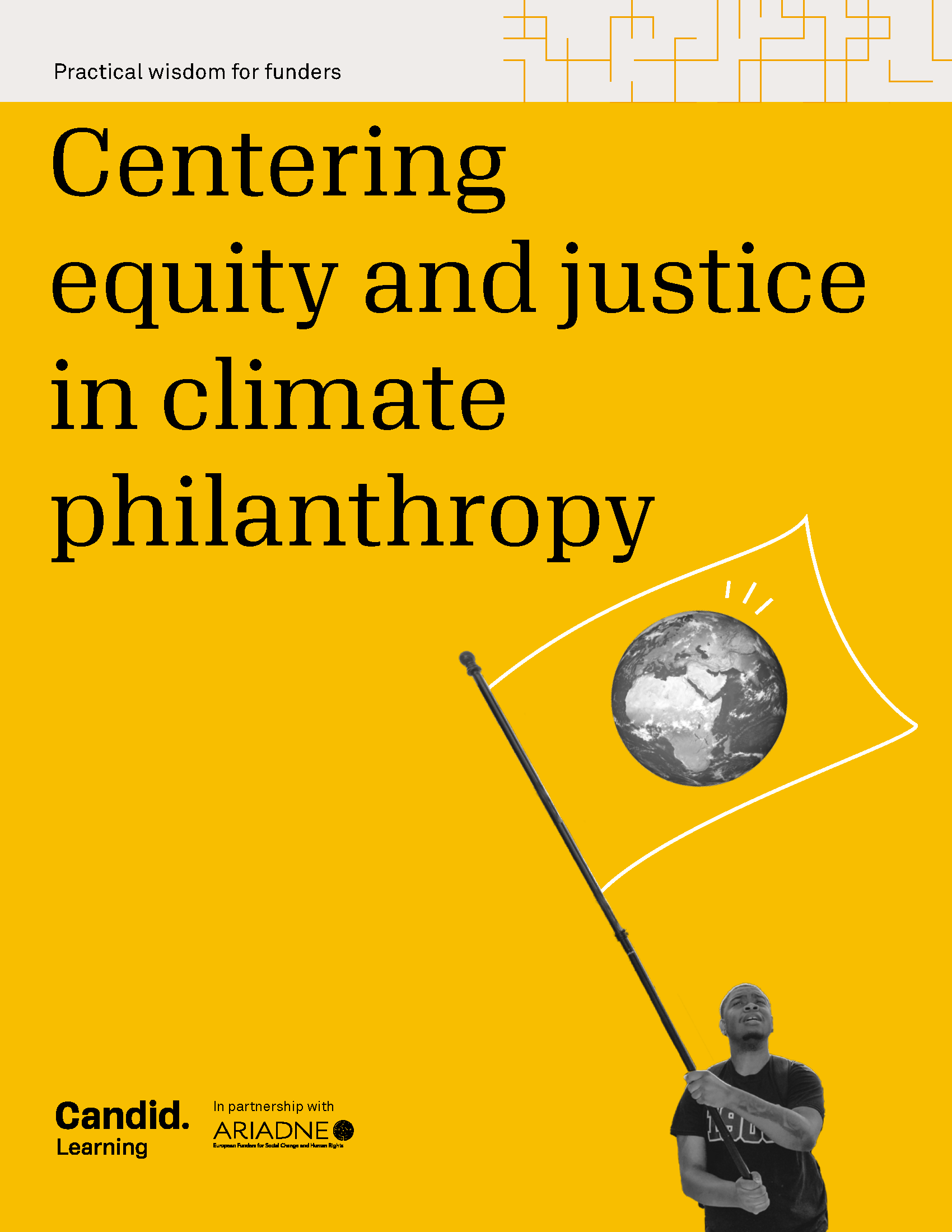Journals
Climate Justice in the field: An interview with the Donors of Color Network
Though the growing climate crisis makes headlines every day, its enormity and complexity can be overwhelming to donors who often struggle to know where to begin and how to devise equitable strategies to address its impacts. This often prevents funders from engaging, but it doesn’t have to be that way.
Candid’s in-depth guide, Centering equity and justice in climate philanthropy, outlines approaches that have worked for experienced funders, including how intermediaries can help motivate and inspire climate funders to grow their giving.
Recently we interviewed Abdul Dosunmu, campaign manager for the Donors of Color Network’s (DOCN) Climate Funders Justice Pledge, one of the intermediaries featured in the guide. In this blog, we will share his insights on how this initiative is growing support for groups that have historically lacked access to funding.

Categories
Content type
Strategies
Issues
Tags
Climate justice in the field: An interview with the Hive Fund
With the climate crisis making headlines every day, the urgency of tackling this issue is clear. But for many in philanthropy, finding solutions to its complexity and enormity can feel overwhelming and uncertain. Without an understanding of how to begin creating equitable strategies to address its impacts, many funders are hesitant to even engage. But it does not have to be that way.
Candid’s comprehensive guide, Centering equity and justice in climate philanthropy, details approaches that have worked for experienced funders, including how intermediaries can help funders get started and make progress.
Recently we interviewed Erin Rogers, co-director of the Hive Fund for Climate and Gender Justice, one of the intermediaries featured in the guide, to share insights from the Hive Fund’s work supporting groups—many of whom have been historically overlooked by funders—that are playing impactful roles in scaling back dirty energy and speeding an equitable transition to clean, renewable energy.

Categories
Content type
Strategies
Issues
Tags
Last call for webinar registration: Join the Demographics via Candid movement
Comprehensive and public data on demographics is foundational to our sector’s work on racial equity. But the need for it results in many requests for this information, in different ways, from various funders. The result is a huge burden on nonprofits to collect and provide this data, taking valuable time away from their crucial mission-driven work.
Demographics via Candid empowers nonprofits to share vital information about their work one time (Data1x) on their Candid profile where it can be deployed as needed to funders, philanthropy-serving organizations, researchers, and other stakeholders across the field.
Learn more about Demographics via Candid and how you can participate by registering for the official, online public launch event, Demographics via Candid: Join the movement, on February 14 at 2 p.m. ET.
Join us to:
- Find out what data is available and the questions we can (and can’t) answer with this data.
- Hear how leaders in the field are using demographic data and the challenges we face to make sense of it all without a standardized format.
- Learn how you can join the movement and get a baseline report on your grantees’ and members’ demographic data.
For more information, read Candid’s blog introducing Demographics via Candid and join us on February 14 at 2 p.m. ET.

Categories
Content type
Strategies
Issues
GlassPockets at sunset: Reflections from working at the intersection of power and light
This year, GlassPockets marks its 12th and final anniversary, as Candid will sunset the website on December 15, migrate its learning content to Candid Learning for Funders, and use new approaches to encourage funder transparency. I’d like to take a moment to offer history and lessons learned, the thought that went into this decision, and how we plan to evolve the effort for greater impact.
A bit of history
The name GlassPockets dates back to the 1950s when philanthropy leaders were in crisis, called before Congress to defend against McCarthyism-fueled accusations of committing “Un-American Acts.” As foundation leaders testified, they learned the difficult lesson that if you don’t tell your story, others will tell it for you.
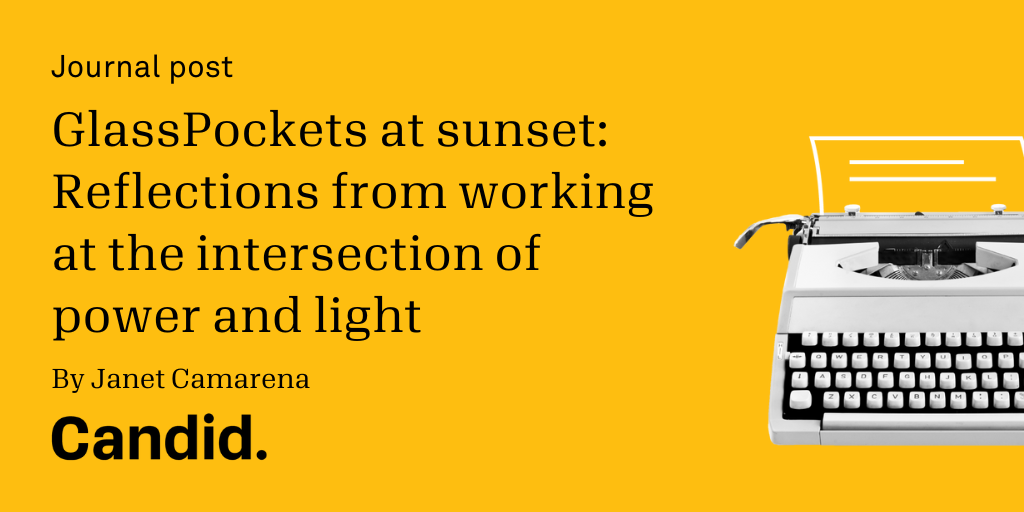
Learning from a sunsetting foundation
After 28 years of funding nature conservation projects, the MAVA Foundation is closing down. While MAVA has allocated more than one billion dollars, through 1,500 projects carried out by more than 500 partners, it is now essential to take a step back, reflect on our experience as a funder, and gather lessons learned to share with others in the philanthropic and conservation community.
As each MAVA staff is increasingly thinking about our new professional lives, we are also taking stock of the foundation's knowledge assets and this process is akin to moving a house: it is necessary to sort things out, throw away the superfluous, put items away in boxes, label them and keep only what is essential to share. So, for over a year, we have been working to capture the lessons from our experiences as funders and share them in the form of blogs, articles, or syntheses so that these lessons can be of benefit to the greatest number.
We have organised all of this content on the MAVA Learning page, and below are highlights of the main learning products you can find there.
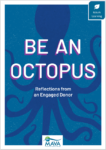 Be an Octopus: A guide presenting the general approach to engagement that MAVA adopted to support our grantee partners in making the most on the ground impact. Indeed, the role of the foundation is not limited to financial support: like an octopus, it has multiple arms which can offer as many levers for an efficient and adaptive support to partners. Collaboration through balanced partnerships, organisational support, coaching of individuals and strengthening of links between nature conservation actors have characterised MAVA's 28 years of experience. The guide draws lessons that are useful for all donors who wish to engage beyond project funding.
Be an Octopus: A guide presenting the general approach to engagement that MAVA adopted to support our grantee partners in making the most on the ground impact. Indeed, the role of the foundation is not limited to financial support: like an octopus, it has multiple arms which can offer as many levers for an efficient and adaptive support to partners. Collaboration through balanced partnerships, organisational support, coaching of individuals and strengthening of links between nature conservation actors have characterised MAVA's 28 years of experience. The guide draws lessons that are useful for all donors who wish to engage beyond project funding.
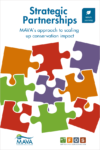 Strategic Partnerships – MAVA's approach to scaling up conservation impact: A guide detailing our collective approach to conservation funding. The collaboration of the foundation's partners through common objectives appears to be a way to achieve more impact in the field whilst limiting competition for funding.
Strategic Partnerships – MAVA's approach to scaling up conservation impact: A guide detailing our collective approach to conservation funding. The collaboration of the foundation's partners through common objectives appears to be a way to achieve more impact in the field whilst limiting competition for funding.
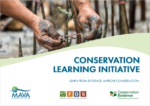 Conservation Learning Initiative: Thanks to the large number of projects funded over the course of its existence, MAVA has a wealth of information on what conservation activities and approaches work, and which are less effective. The Conservation Learning Initiative presents the findings of the analytical work carried out by Foundations of Success and Conservation Evidence on the themes of capacity building, partnerships and alliances, research and monitoring, and flexible funding.
Conservation Learning Initiative: Thanks to the large number of projects funded over the course of its existence, MAVA has a wealth of information on what conservation activities and approaches work, and which are less effective. The Conservation Learning Initiative presents the findings of the analytical work carried out by Foundations of Success and Conservation Evidence on the themes of capacity building, partnerships and alliances, research and monitoring, and flexible funding.
 Not if but how – troubleshooting in projects: A project is never a smooth ride and a collective approach such as that of strategic partnerships can involve new problems in project implementation. A blog, available in English and French, from MAVA Manager, Luis Costa looks at the role of the donor in solving the problems that are bound to arise during project implementation.
Not if but how – troubleshooting in projects: A project is never a smooth ride and a collective approach such as that of strategic partnerships can involve new problems in project implementation. A blog, available in English and French, from MAVA Manager, Luis Costa looks at the role of the donor in solving the problems that are bound to arise during project implementation.
 Learning to Let Go – Decision-Making for Foundations: An overview of our trust-based approach and decision-making mechanism for project funding. This guide documents how the foundation distributes decision-making power based on trust with partners and on the autonomy of staff within the foundation.
Learning to Let Go – Decision-Making for Foundations: An overview of our trust-based approach and decision-making mechanism for project funding. This guide documents how the foundation distributes decision-making power based on trust with partners and on the autonomy of staff within the foundation.
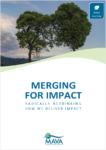 Merging for Impact – Radically rethinking how we deliver impact: The evolution of MAVA as an organisation has been marked by a major step: its merger with another 'sister' foundation. Based on the testimonies of partners and other stakeholders involved in the process, this guide, available in English and French, explores the benefits, and also the prerequisites and challenges of such merger.
Merging for Impact – Radically rethinking how we deliver impact: The evolution of MAVA as an organisation has been marked by a major step: its merger with another 'sister' foundation. Based on the testimonies of partners and other stakeholders involved in the process, this guide, available in English and French, explores the benefits, and also the prerequisites and challenges of such merger.
 Using core values to honour the founder's vision without creating a mausoleum: In its lifetime, the MAVA Foundation has worked to reaffirm and formalise the values that have underpinned its commitment since its creation. This blog by MAVA Director General, Lynda Mansson, available in English and French, looks back at this structuring and inspiring process.
Using core values to honour the founder's vision without creating a mausoleum: In its lifetime, the MAVA Foundation has worked to reaffirm and formalise the values that have underpinned its commitment since its creation. This blog by MAVA Director General, Lynda Mansson, available in English and French, looks back at this structuring and inspiring process.
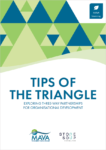 Tips of the Triangle – Exploring three-way partnerships for Organisational Development: In view of the end of its funding in 2022, the MAVA Foundation has reinforced its organisational support towards some of its partners. This guide, created in partnership with Stone Soup Consulting, details how a three-way partnership between the partner, an external consultant, and a donor can be particularly effective in strengthening that partner and a great learning process for all.
Tips of the Triangle – Exploring three-way partnerships for Organisational Development: In view of the end of its funding in 2022, the MAVA Foundation has reinforced its organisational support towards some of its partners. This guide, created in partnership with Stone Soup Consulting, details how a three-way partnership between the partner, an external consultant, and a donor can be particularly effective in strengthening that partner and a great learning process for all.
 A fruitful OD partnership! Our retrospective of the long collaboration between MedPAN and MAVA: As an illustration of the diversity of Organisational Development (OD) partnerships, this blog, collectively written by Marie Romani (MedPAN), Simon Mériaux (MAVA Manager) and Julien Semelin (ex-MAVA), and available in English and French, looks back at an OD support that has matured over the years and underlines the need for a coherent approach between the different funding supports provided.
A fruitful OD partnership! Our retrospective of the long collaboration between MedPAN and MAVA: As an illustration of the diversity of Organisational Development (OD) partnerships, this blog, collectively written by Marie Romani (MedPAN), Simon Mériaux (MAVA Manager) and Julien Semelin (ex-MAVA), and available in English and French, looks back at an OD support that has matured over the years and underlines the need for a coherent approach between the different funding supports provided.
 Why investing in leadership development matters: In addition to strengthening organisations, the MAVA Foundation has been engaged in setting up a much-appreciated mechanism to support the leadership capacities of young and not-so-young individuals working in nature conservation. Based on the MAVA Leaders for Nature Academy impact report, this blog , collectively written by Common Purpose, Mowgli Mentoring, MAVA, and Academy alumni, and available in English and French, details the rationale and results of the intergenerational approach (between junior and senior staff from different organisations) that has led to personal, professional, and organisational changes.
Why investing in leadership development matters: In addition to strengthening organisations, the MAVA Foundation has been engaged in setting up a much-appreciated mechanism to support the leadership capacities of young and not-so-young individuals working in nature conservation. Based on the MAVA Leaders for Nature Academy impact report, this blog , collectively written by Common Purpose, Mowgli Mentoring, MAVA, and Academy alumni, and available in English and French, details the rationale and results of the intergenerational approach (between junior and senior staff from different organisations) that has led to personal, professional, and organisational changes.
 Care for Those Who Take Care for the Planet – Grant-making for staff development: Leadership support is an example of capacity building that partner organisations should be able to offer to their staff in order for them to thrive in achieving their mission. However, this is only possible if these organisations have the financial means for this type of support... and therefore if donors fund these activities. This guide looks at the investment in professional development of employees as an influencing factor in the impact and stability of teams, and at the appropriate means of funding.
Care for Those Who Take Care for the Planet – Grant-making for staff development: Leadership support is an example of capacity building that partner organisations should be able to offer to their staff in order for them to thrive in achieving their mission. However, this is only possible if these organisations have the financial means for this type of support... and therefore if donors fund these activities. This guide looks at the investment in professional development of employees as an influencing factor in the impact and stability of teams, and at the appropriate means of funding.
Other learning products will likely be published... We hope you will be inspired to use and share them!
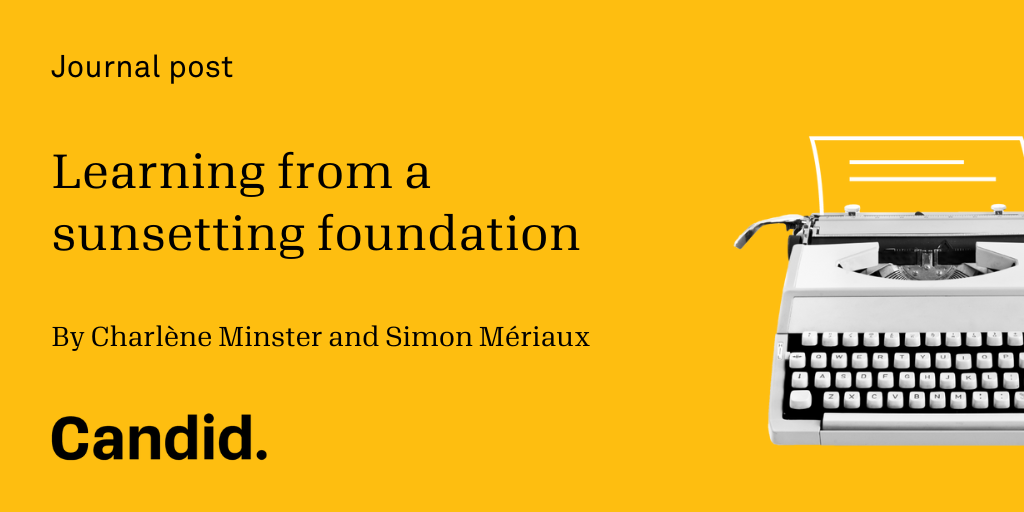
Categories
Content type
Strategies
Issues
How to unlock a participatory strategy: Five key enablers create the conditions for success
A year ago, funder members of the Transparency and Accountability Initiative (TAI) posed a question: How could they apply the tenets of participatory grantmaking to their strategic processes?
It turned out to be a hard question to answer. While participatory grantmaking has been much discussed, its less-discussed siblings in budgeting, evaluation, and strategy are being quietly utilized around the world. This meant there is a dearth in publicly-available, practical advice on the subject of “participatory strategy.”
As a result, TAI brought together myself and four other practitioners of participatory strategy to share our insights into what truly matters when embarking on this journey, the highlights of which are shared throughout this article.
The full set of insights and resources shared by this group are now available as a resource library. It aims to illuminate what is (and isn't) a participatory strategy, showcase how funders and nonprofits have done it, and offers insight into the spectrum of participation and power-sharing involved.
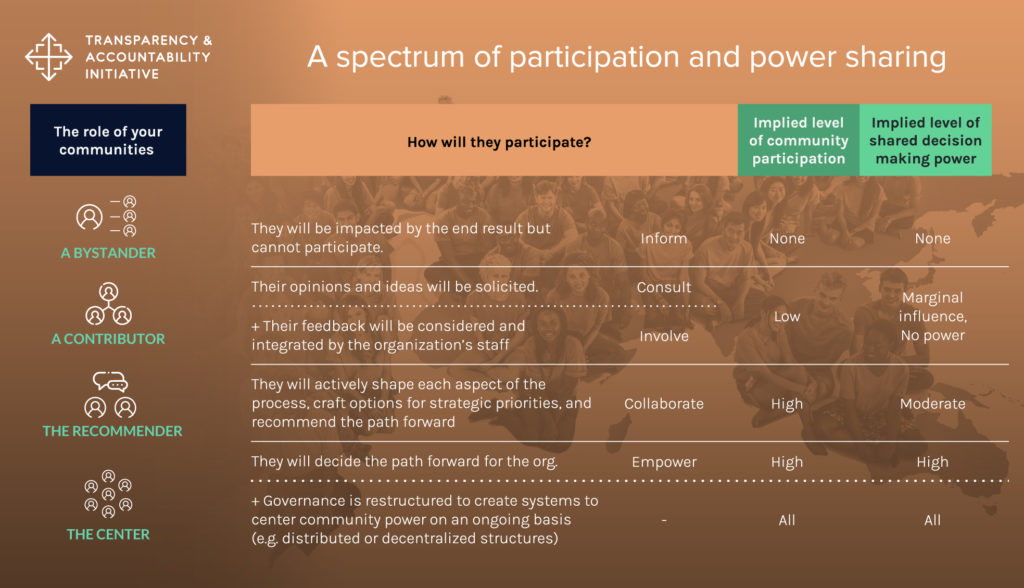
Shifting to a participatory strategic process can be transformative. It can restructure a movement or reconnect it with its roots. It can shift an organization’s culture to include more consultation and civil discourse. It can provide a mechanism for identifying who in power is enabling or impeding change.
But how can funders create the conditions for success? Five key enablers make a difference.
Articulate the differential value a participatory strategic process will bring to your organization and your work.
For those new to the space of participatory practices, participatory elements can feel like a nice-to-have element that takes up too much time and resources.
Before jumping into creating a new process, investigate and articulate why this different approach matters. What do you expect to be different at the end of the process if you invite more participation and share your power?
Lay the groundwork for a change process, not just a strategy process.
A participatory strategic process is actually two processes in one: one is focused on defining future priorities, and the other is focused on changing the way we operate and interact. There is an immense focus placed on the first process – defining strategy – and, unfortunately, the second process is often a surprise.
For organizations without a strong practice of working in the open, conducting consultations, or sharing decision-making, the shift to participatory practices can feel like a fundamental culture shift. In these cases, it becomes crucial to lay the groundwork for the change process early – sometimes far earlier than beginning the strategy process.
Especially when current or prospective grantees may become involved, those designing the strategic process need to consider if there is sufficient trust between funder and grantee to unlock the process.
“Sharing of power is pretty easy because one already has it. But for somebody to interact with power, for somebody to become accustomed and acclimatized with power and then contribute is always tricky… The correlation between 'the power that is shared' and 'the [strategic] output that is expected' is not in the favor of those who just enter into the conversation. It is always in the favor of people who are not just situated in power but who are also comfortable in power.”
— Tanveer Hasan, Senior Program Manager at the Wikimedia Foundation
Create a recurring practice around detecting biases
We all suffer from biases that make it difficult for certain people, perspectives and ideas to be fully included within our processes.
“Think about ‘Who is it we are including?’. No matter who your stakeholders are, what groups there are, there are always those more visible voices and those less visible voices. It's our job when we design these [participatory] processes that we go beyond the usual suspects.”
— Natalia Tariq, Resource Mobilization Coordinator at the Association for Progressive Communications
Building a practice of attending to bias is stronger than doing it once. For example, early in the process, consider how you’re seeking out conflicting points of view to build a more holistic picture of the issues at hand. As you consider tradeoffs, consider how you’re holding space to pull out implicit assumptions and challenge them.
Design a thoughtful strategy around how to engage those with power.
One of the first questions to ask before embarking on a participatory strategy (or any participatory process) is: Are those in power ready and willing to share power?
“Having a really thoughtful strategy for how anybody with [vested] power, authority, and resources is engaged and brought along is a critical part of the design process… Don't underestimate paying attention to power and politics, and the formal spaces that are there. Doing so could undermine a process, which then damages those who've participated.”
— Sarah Miller, CEO of Principia Advisory
Part of the internal change process is shepherding those with power through a process of reckoning and reconciliation: through seeing the breadth and depth of their power (formal and informal), the impact it’s had on others, and the value of shifting to share power. These conversations become their own stream of work, one that brings repeated attention back to how an organization and the strategic process embody equity.
Lean into the discomfort. Be willing to take a first step, even knowing it’s not perfect.
The most important step is just starting. Define your scope of influence and take a first step within it. Commit to learning from that first foray, and also commit to applying those lessons learned to the next step.
Every practitioner mentioned in this article – representing experiences at Prospera INWF, APC, CARE International, Wikimedia – have gone through multiple strategic processes, where they have learned what does and doesn’t work for their context. Rather than aiming for perfection, they have aimed for progress.
“Equity is not a simple act. It is a process of active listening. It is a process of constantly correcting course. Equity is not given. Equity is rather built: it's built together [and] it's built collectively.”
— Ana Pecova, Deputy Director of Prospera INWF
To learn more about how to approach participatory strategy, visit the Transparency and Accountability Initiative (TAI)’s Library on Participatory Strategy. TAI is a collaborative of funders working toward a world where citizens are informed and empowered, governments are open and responsive, and collective action advances the public good.

Categories
Content type
Strategies
Eight tips for funders to help grantseekers navigate your website
For funders and foundations, one big advantage of an easy-to-navigate grants section of your website is that you can help grantseekers are more likely to submit the required information on the first try. With clear and concise instructions, funders can also help grantseekers save valuable time that’s best spent on mission-oriented work.
Over the past three years, Candid has made data on over 15,000 funding opportunities available on Philanthropy News Digest (PND) RFP Bulletin and Foundation Directory. Based on what we’ve seen on thousands of funders’ websites, we’d like to offer eight suggestions for grantmakers to leverage their websites in ways that will save valuable time for themselves and for grantseekers.
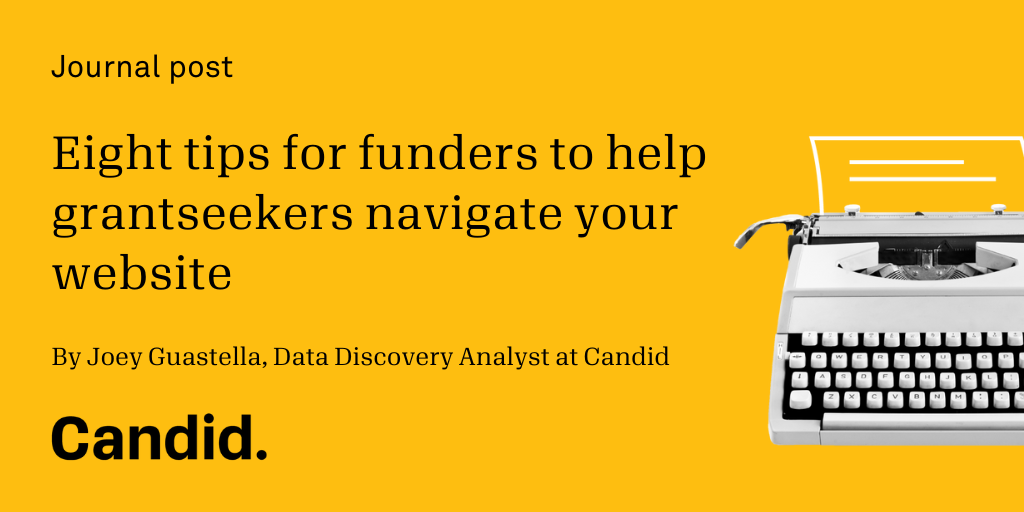
Categories
Content type
Strategies
Fast or movement led? Both! Participatory Grantmaking can move fast
Participatory Grantmaking offers a lot to funders who are interested in sharing power - but one thing we thought it could not really do is move fast. An example from our pandemic response grantmaking shows otherwise.
When the COVID-19 pandemic brought the first lockdowns in Germany in early 2020, we learned from the news that one group that was falling through the cracks of the social safety net were undocumented migrant sex workers. As the lockdown and social distancing eliminated their source of income; many found themselves isolated in a foreign country without proper documentation or a social safety net and as a result, were facing hunger and homelessness.
Stepping out of our comfort zone
Dreilinden is a dedicated LGBTIQ rights funder. We do not usually fund groups that include cis and straight people. But we are aware that a high percentage of people from our communities work in the informal sector, and that a high percentage of sex workers belong to our communities. So we decided to step out of our comfort zone and fund sex worker rights.
Through social media we had heard about several initiatives that were started by people working in the entertainment industry and in sex work. Finally, through internet searches and through asking people in our networks for advice, we came across the union of sex workers in Germany, which already had an emergency response mechanism in place prior to the pandemic. We reached out and had a call, asking how much money they would like to have and how much they could absorb. The amount we offered was much more than they had expected, but they took the challenge because they knew well how much the money was needed.
A challenge we faced was that we could not fund the organization directly - the union of sex workers is having a hard time becoming an officially registered organization with a tax exempt status in Germany. We took a route we usually take when we want to fund unregistered groups (which the German regulations for our benefit to the public status does not allow us to do): we went through a nonprofit organization that was able to channel the funds to the union. Of course, we put a percentage of the amount on top to compensate them for their efforts.
Getting money out the door quickly
The mechanism of the emergency response fund is a participatory grantmaking process and works as follows: Applications can be submitted by sex workers in need directly to the fund by telephone, social media, or email in 16 languages. Two volunteers who are sex workers themselves do the first screening, one of them later was formally designated as part-time staff to do this. They work together with a screening board that consists of three sex workers and three consultants (for example social workers from the field), in case of a deadlock situation deference is given to those with lived experience, so the sex workers’ votes count double.
The application form asks only for the most basic data and can be filled out anonymously. Many applicants do not have bank accounts, so approved funds had to be given to them in cash through volunteers from the helpline network across Germany. The emergency response team was able to organize this process in a way that made sure funds reached people in need within three days.
Data the team collected showed that approximately 45 percent of people who received funds had no permanent address, and 90 percent did not have health insurance. People applied for money to buy food, clothes and medicine, pay the rent (this became more pressing the longer the lockdowns were in place), for transportation and for keeping up communication with their families and close ones. Grant amounts were between 200 and 1200 Euros, with a slight raise later for debts from unpaid rents. The latest report from the fund team states that 45 percent of people funded said they were trans, inter or non-binary. Overall Dreilinden gave 180.000 € in three installments in 2020 and 2021.
The emergency response fund team used the approach of an advisory board that consists of people from the field. An advisory board is not the most radical approach in participatory grantmaking because in this case power is shifted to just a slightly bigger group of people. But it allowed the team to get money out the door quickly and still make sure the decisions are made for sex workers by sex workers. This showed us that participatory grantmaking can be done even if time is of the essence. The pandemic provided us with examples of how fast it can move (1).
What we learned
A downside to the way our cooperation was set up was the huge workload on the two people coordinating the selection and payment process. It would not have worked without dedicated volunteers at a time when the people giving their time and energy were themselves struggling to maintain their own existence. This created a lot of exhaustion on their part.
Another issue is the question of how the emergency response fund can become a permanent institution. The fund team together with the union office has worked on fundraising strategies because the need that had become very harsh and visible during pandemic times of course is always there.
Both these learnings are sustainability issues and made us once again reflect on what our role as funders is. How can we take care of the caregivers we support? How can we change our strategies so we can contribute to building funding mechanisms for the most marginalized that are self-sustaining? We are still looking for the answers, all while the need continues.
Funding sex worker rights has now become a permanent part of our portfolio as we support the Red Umbrella Fund with multi-year core support. What the pandemic allowed us to see is that a lot more is possible than we thought. In the moment of shared vulnerability, we let our grantmaking decisions be informed by a sense of empathy, and this opened doors to communities we had not been connected to before.
--Claudia Bollwinkel
- A player from the LGBTIQ funding ecosystem that does rapid response grantmaking with a participatory approach is Outright International. The Global Resilience Fund for girls and young feminists was created during the pandemic and represents a more democratic model of philanthropy by its pooled funding mechanism, shared governance and participatory grantmaking.
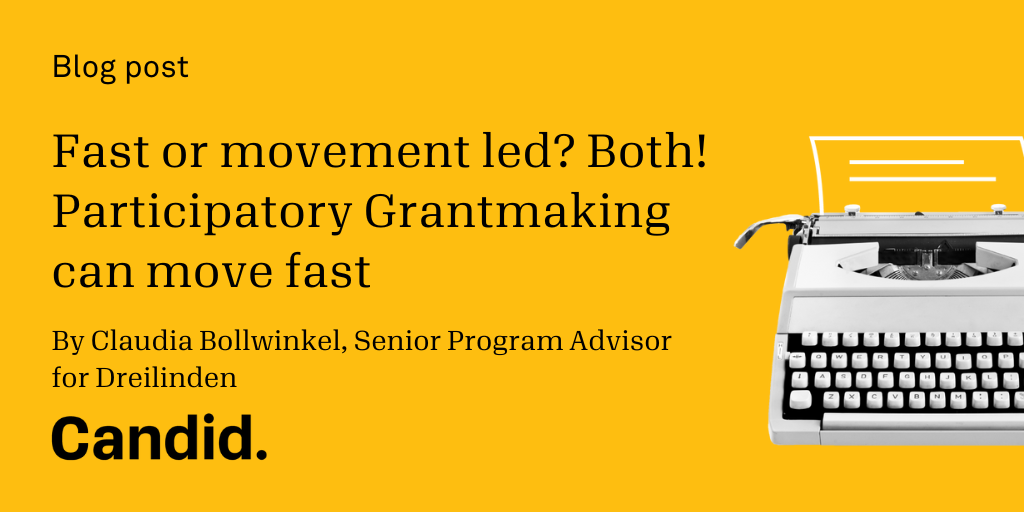
Categories
Content type
Strategies
Issues
How do young people want to participate in philanthropy? A webinar recap
Although young people were statistically less likely to experience health-related impacts from COVID-19, their lives were disrupted in many ways. As a former educator, I witnessed the impact of virtual schooling on teenagers ranging in age from 14-18. Lacking social connection and the structure provided by in-person schooling resulted in a fragmented population of students. Mental health issues that existed before the pandemic were made worse and, upon the return to in-person schooling, it was apparent that young people would be dealing with the damages from the COVID-19 pandemic for many years to come.
Though these are just a few examples of ways the pandemic affected young people in America, the world’s youngest generation was affected on a global scale.
Where many organizations saw an impassable roadblock, Global Fund for Children (GFC) and the Avast Foundation saw an opportunity to address some of the problems made more complex by the pandemic and create systemic change by establishing the Spark Fund.
What is the Spark Fund?
GFC and the Avast Foundation established the Spark Fund, an innovative participatory fund designed and decided by youth, to empower the next generation to advocate for human rights in the digital age.
Four regional youth panels were established in Southern Africa, South Asia, Europe & Eurasia, and the Americas. These panels consisted of youth grantmakers – roughly 76% of whom had never made funding decisions before—making decisions themselves with advisement and support from GFC. Some of the funding focus areas were social justice, climate change, and mental health.
In each regional Spark Fund panel, youth grantmakers created their own grant criteria and application questions. Then, they collectively decided on who and what they wanted to fund and the amount they wanted to award.
The webinar
Recently, GFC and its Youth Leadership Council held The Youth Spark: A Transition to Youth-focused Grantmaking to celebrate International Youth Day. This webinar explored ways in which young people would like to play a part in the philanthropic community.
Youth grantmakers from Asia, Southern Africa, Europe, and the Americas shared their insights and experiences as Spark Fund participants during this virtual event. The speakers all agreed that one of the most important aspects of effective grantmaking to address the needs of young people is including the voices, perspectives, and knowledge of young people in the decision-making process.
Insights from youth grantmakers
The webinar, featuring insights from a panel of youth grantmakers, was moderated by Solomon Ndondo, founder and executive director of the Africa Rise Foundation and chair of Global Fund for Children's Youth Leadership Council. During the webinar introduction, Ndondo outlined the impact of the Spark Fund and explained that the Spark Fund panelists were able to help 56 organizations in 13 countries around the world.
Amar Lal, Irina Novac, Moui Kandjoze, and Bicky Bohórquez Bastidas spoke about their time with the Spark Fund and the funding decisions they helped make in their respective committees.
Reflections on the process
Moui Kandjoze, a participant in the African Spark Fund panel, explained how her group found their confidence as grantmakers with the help of GFC.
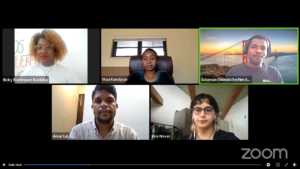 Kandjoze said that her grantmaking panel “didn’t really know where to begin.” She then said that the Spark Fund gave the youth grantmakers tools, such as a voting platform designed by Shared Nation. This platform allowed participants to favorite their top applicants. The applicants then moved to a pairwise voting round. During this round, Spark Fund panelists created the shortlist of applicants for final discussion and decision-making, which helped them establish a consensus-based approach to grantmaking.
Kandjoze said that her grantmaking panel “didn’t really know where to begin.” She then said that the Spark Fund gave the youth grantmakers tools, such as a voting platform designed by Shared Nation. This platform allowed participants to favorite their top applicants. The applicants then moved to a pairwise voting round. During this round, Spark Fund panelists created the shortlist of applicants for final discussion and decision-making, which helped them establish a consensus-based approach to grantmaking.
Though initially apprehensive and aware of “the learning curve” involved, Kandjoze explained that she believed her grantmaking panel did well with the guidance provided.
Kandjoze noted that members of the grantmaking committee she worked with as part of the African Spark Fund panel aimed to highlight organizations that “would often be overlooked.” She was grateful that GFC allowed the youth grantmakers to make their own decisions to fund organizations that “really had the heart” and let her committee establish a culture of trust-based philanthropy in their decision-making.
Irina Novac, a member of the first Spark Fund cohort, echoed Kandjoze’s call to lift up voices that often go unheard and touched on the issues that were addressed by participants in her grantmaking panel.
Novac described the applications her cohort received: “We had a lot of applications, and they were all very diverse, and we—it was so many issues that young people were dealing with in their regions—but at the same time, we also noted the need for more projects that were focused on youth in rural areas in our countries because they do not really have access to enough—or even any—personal growth opportunities.”
Amar Lal explained the process that the Asian Spark Fund panel went through in its pursuit of organizations to fund. First, the selected youth grantmakers came together to discuss what issues they had each seen firsthand in their respective countries. Then, they specified three of these issues that would inform their funding decisions. After selecting their focus areas, the panelists reviewed applications linked to their funding goals.
Lal’s grantmaking committee received almost 200 applications from three countries. Even with so many applications to review, the youth grantmakers wanted to focus on “those youth-led organizations who are working at the grassroots level for real change” because those organizations reflected the grantmakers themselves.
Lessons learned
A member of the Spark Fund panel serving the Americas, Bicky Bohórquez Bastidas, was asked to share the most significant lessons learned during her time as a Spark Fund participant. She said:
“I think the biggest lesson I learned was to learn to listen to different points of view. Because clearly, we have to understand that not everyone thinks the same. And so, to be able to reach a consensus for the good of the population of a community was very important. To be able to do teamwork was very powerful.”
Bohórquez Bastidas also spoke on the various broadcasting methods, ranging from radio to text messaging, used to reach more rural grantees and the value these rural applicants added to her experience: “We received so many applications that, every time we read one of the applications, it was just very emotional. A lot of feelings came to the surface because we got applications from places that don’t normally get taken into account—that are made invisible.”
Throughout the webinar, each youth grantmaker repeated the notion that participatory grantmaking is the best way to meet the needs of populations in crisis.
Amar Lal commented that the best advice for funders going forward is “you need to listen to the voice of the people” and entrust those on the frontlines to build solutions.
Next steps
You can watch the full recorded webinar, or if you are interested in learning more about the Spark Fund and future public-access webinars, you can sign up for GFC’s mailing list.
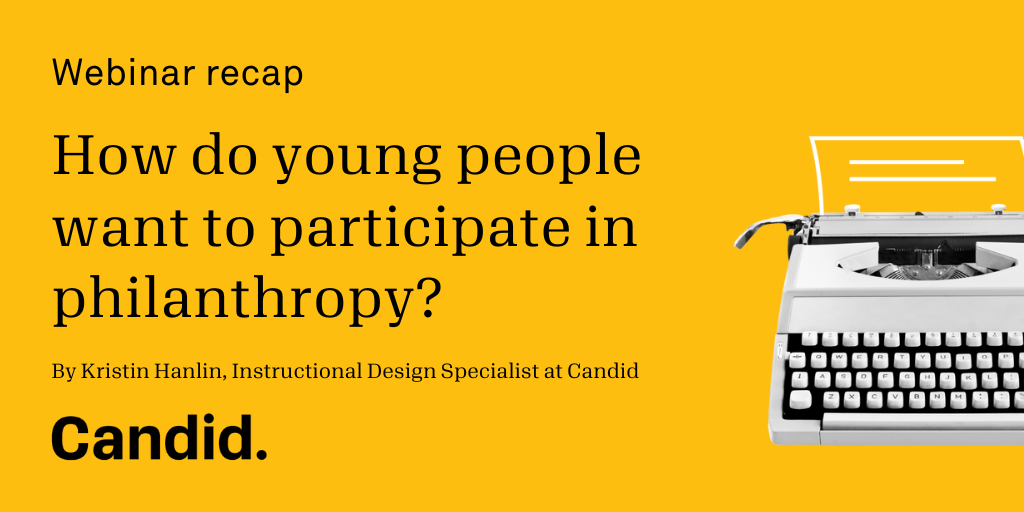
Categories
Content type
Strategies
A participatory approach to funding climate justice: Learnings and challenges
Greg Hilditch is interim executive director for Global Greengrants Fund UK, which is featured in Candid’s new funder’s guide to climate justice, Centering equity and justice in climate philanthropy. This post is part of a series highlighting case studies featured in the guide. Learn more or download the guide here.
It's not only who or what you fund that matters, it's also how you go about it. That's part of the underlying rationale for participatory and trust-based approaches to philanthropy, and it's a theme that runs through Candid’s new guide on funding for climate justice work, Centering equity and justice in climate philanthropy.
 Climate justice approaches recognise that the world's gravest ecological, economic and humanitarian crisis is inextricably joined with the struggle of marginalised peoples for their rights, wellbeing and livelihoods; and that the root causes of the climate crisis are the same as those that oppress and exclude women, racialised working-class communities, Indigenous peoples, people with disabilities, and all others affected by systematised disadvantage. Philanthropy itself is also a part of this complex picture, and so it’s no surprise that funders aiming to tackle these deeply intertwined issues are also engaging in practices that seek to address the power imbalances within philanthropic giving.
Climate justice approaches recognise that the world's gravest ecological, economic and humanitarian crisis is inextricably joined with the struggle of marginalised peoples for their rights, wellbeing and livelihoods; and that the root causes of the climate crisis are the same as those that oppress and exclude women, racialised working-class communities, Indigenous peoples, people with disabilities, and all others affected by systematised disadvantage. Philanthropy itself is also a part of this complex picture, and so it’s no surprise that funders aiming to tackle these deeply intertwined issues are also engaging in practices that seek to address the power imbalances within philanthropic giving.
Participatory grantmaking – a term that includes an incredibly diverse range of practices – has emerged in recent years as a particularly valuable approach for justice-oriented funders who want their work to reflect their values and to incorporate a systems change perspective. An earlier Guide from Candid, Deciding Together, served to demystify participatory grantmaking, and the global Participatory Grantmakers Community has recently emerged to help support and advance the practice. Participatory grantmaking is based on a very simple idea: that the people most affected by a problem have the best understanding of it, and are also best placed to provide a solution. Participatory approaches also, crucially, transfer power from the traditional gatekeepers within philanthropy to people and communities who have often been excluded from decisions that deeply affect them.
Elevating community expertise

Global Greengrants Fund was established in 1993 to channel resources and power directly to local, grassroots environmental justice initiatives. Although the discourse, practice and community around participatory grantmaking was far less developed then compared to today, it rapidly became clear that putting local expertise at the heart of decision-making was not only the most effective way to fund grassroots initiatives around the world – it was also the only way to truly incorporate a justice lens into this type of philanthropic work.
This perspective has underpinned the slow, organic evolution of our current grantmaking practice, in which a network of over 200 local advisors – activists, community leaders, researchers, citizen journalists – identify grantee partners, award small grants of five to ten thousand dollars, and (where it is welcomed by our grantee partners) provide long-term mentorship and capacity-building support that is based in trust and solidarity.
Because the work we fund is determined solely by the strategies of our grantees and of the advisors who fund and support them, our portfolio of over 16,000 grantees is exceptionally diverse – from direct resistance to fossil fuel extraction, through youth-led conservation projects, to championing feminist leadership within climate activism. Yet globally, climate justice is by far the single most prominent theme emerging from this portfolio, representing 51% of our grantmaking and aptly reflecting the scale and urgency of the crisis for communities on the frontline of fossil fuel extraction, deforestation, flooding, wildfires, drought, rising tides and extreme weather events.
Currently, Greengrants awards over 1,000 grants per year to local environmental justice initiatives through this network of advisory boards, sister funds, and specialist NGOs. Our advisory network and our grantmaking have grown substantially in recent years, and as we grow, the organisation is undertaking a phase of learning and reflection with our stakeholders, seeking to capture and reflect on the past thirty years of supporting local movements, and in doing so to ensure that we are equipped to continue strengthening these grassroots initiatives in the face of rapidly accelerating climate breakdown.
While this process is in its early stages, from our conversations and reflections so far, we have identified some key lessons on the challenges and opportunities that our participatory approach to grantmaking brings for climate justice funders:
Fostering learning within climate justice work
51% of all of the initiatives Global Greengrants Fund supports are explicitly focused on addressing the impacts and root causes of the climate crisis: communities mobilising against mining and other forms of extraction; activists gathering evidence to support strategic litigation against new fossil fuel infrastructure; youth groups leading action to strengthen local resilience against extreme weather events.
Yet virtually all of the work we fund intersects with climate justice to some extent: local conservation work is driven and constrained by climate impacts; regenerative agriculture helps to mitigate emissions from farming while also supporting biodiversity and traditional rural livelihoods. In some regions where activism and civil society faces constraints from governments and others, groups may also be doing climate mitigation or adaptation work, but avoid using climate language to describe their work.
The holistic nature of the work we support is one of the strengths of our approach, but it also raises a challenge: how do we make sense of a portfolio that is so diverse, and draw learnings from our grantmaking that can strengthen the model and ultimately strengthen climate movements?
One approach which we are beginning to test involves thinking differently about our relationship with grantees. Rather than Greengrants funding being the thread that draws these disparate pieces together, we aim to become a ”decentralised learning hub” in which we create self-sustaining communities of practice among our advisors and grantees, and funding becomes only one part of how we foster connections between and within movements. For example, a number of our advisors have been working together to share best practices in grantmaking for Indigenous communities, and another learning cluster has recently formed to incorporate a disability inclusion lens across our funding work.
Defining impact
As an intermediary, an important role we play is to mitigate risk for both grantee partners and other philanthropic actors. But mitigating risk also involves being able to address a number of challenging questions around impact, particularly for funder partners who are newer to supporting movements work. Intuitively, we know that the grassroots climate justice work we support has real impact on mitigating emissions while securing communities’ rights and demonstrating more just, equitable alternatives. Yet attribution is a major challenge in this type of work, especially given the nature of our grantee partners – most of whom have no resources for impact evaluation. So, how can we best understand, and communicate, the impact of our grantees’ climate justice work?
Our approach to date has been to emphasise movement strengthening within our evaluation and learning framework, which enables us to focus on the extent to which our grantee partners are well connected with one another; able to access key resources and knowledge; and how successful they are in engaging with their communities. As we grow, there is tension inherent in the need to find new ways of demonstrating the mitigation impacts of climate justice work without diluting this emphasis on movement-building.
Power and privilege in participatory grantmaking
The third question that is emerging from our learning and reflection process is the nature of power and privilege within our work. Our model has evolved, organically, over the past three decades as an attempt to upend some of the power dynamics in philanthropy. As we approach our thirtieth year, how can we ensure that our intention to shift philanthropic power is also reflected in the ways we operate as an organisation? From a climate justice perspective, this means bringing an intersectional lens to our work:
- Assessing our grantmaking to better understand how far it enhances the leadership and voices of women, Indigenous people, youth, people with disabilities and other groups who have historically been marginalised and who are on the frontlines of climate breakdown.
- It also means having difficult conversations about gender justice, racial justice and class privilege within our staff and our advisory network. And,
- Undertaking efforts to become a less hierarchical and more decentralised in how we operate as an organisation.
Our approach to funding grassroots climate justice action is far from the only one, and Global Greengrants Fund is part of a far stronger community of practitioners of participatory grantmaking than anybody would have believed possible in 1993. As we look to the enormous challenges of this now and in the years to come – years that are absolutely critical in the struggle for climate justice – learning and exchange with others will be more important than ever. Candid’s valuable new resource documents our own experience and perspectives along with that of a variety of diverse philanthropic actors now also supporting climate justice work bringing together lessons learned from across a broad spectrum of the field. We look forward to continuing to learn together as a form of field building that will allow us to better meet the demands of the climate crisis.
